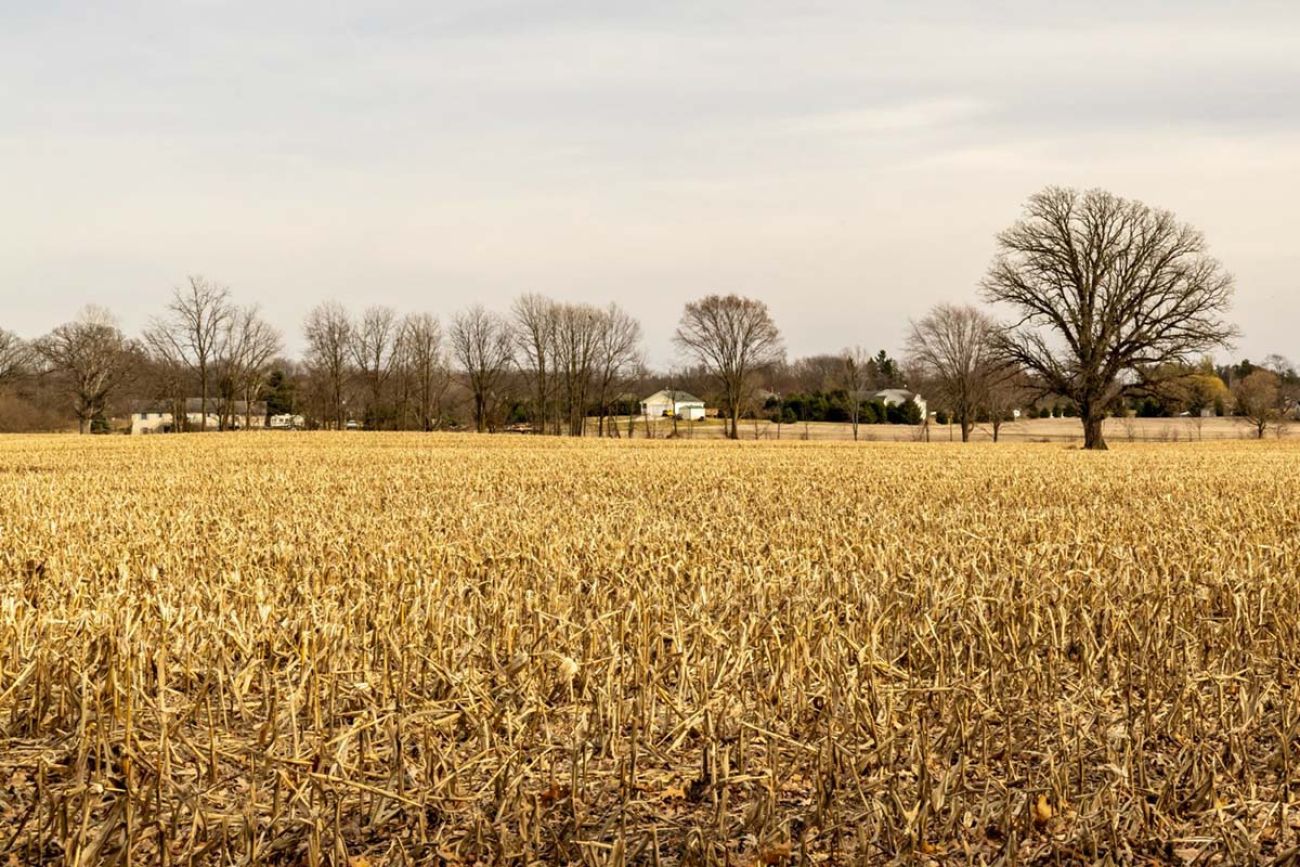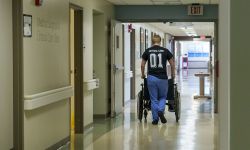In rural Michigan, farmers split over big solar

FOWLERVILLE – Differing opinions about large solar energy projects are pitting neighbors against each other in rural areas of Livingston County.
Last November, the Legislature passed climate bills mandating utility companies to generate 60% of their energy from renewable sources, including solar and wind, by 2035, and 100% from state-approved clean energy sources by 2040.
To achieve those goals, the legislation authorized the state to override local bans on large-scale renewable energy projects. Several townships had blocked solar and wind projects across the state in recent years.
Related:
- What farmers want from Michigan’s next U.S. senator
- Michigan’s ‘queen of ag’ is retiring, risking Democratic U.S. Senate seat
- Wind, solar farm law won’t make November ballot in Michigan
Opinions about solar farms are split in the county.
Jacob Fyrciak, a fourth-generation farmer in Conway Township, said that his family-owned Fyrciak Farms was approached by a solar developer.
“At first we thought it was a good idea,” Fyrciak said.
But upon seeing the sample contract, Fyrciak said many terms were vague and enough were problematic to give him pause.
And when farms neighboring his turned down solar lease offers, his farm was no longer of interest to DTE Energy, he said.
“They want adjacent tracts and they want large tracts,” Fyrciak said. “When the other parcels said no, that just basically cut us out. Which, given the public opinion, we were not overly sad about.”
Emotions run high around solar farms in Livingston County, and many townships have had contentious public meetings.
Fyrciak said there was a big debate in Conway Township, and many more people showed up at the township meeting than usual when solar farms were on the agenda.
“They had to move it from our local town hall to the school auditorium to fit the number of people in,” Fyrciak said, and most attendees opposed the solar projects.
Opinions have become so polarized that some won’t publicly speak out. One farmer declined to be interviewed, citing concerns about the political and social backlash if identified.
Other farmers and local officials didn’t respond to requests for interviews.
Local opposition has affected renewable energy projects in the area.
“We’ve really seen a slowdown, especially with wind energy in Michigan,” said Carlee Knott, the energy and climate policy coordinator at the Michigan Environmental Council.
“Developers will identify farmers who want them to be built in those areas, and then they run into issues with disinformation campaigns,” Knott said.
The legislation “ended up being a pretty good compromise between what developers wanted, what local governments wanted and what environmentalists wanted,” Knott said.
“Some changes that were made to make it a better situation for the local governments were to make sure that they have first pass at approving the permits,” she said.
Under the new guidelines, for smaller projects and for local ordinances that aren’t more restrictive than the state’s, developers would work directly with the local government and not with the state, Knott said.
That’s often preferable for developers since the state process can take much longer.
If a local government has more restrictive permitting ordinances than the state, the developers would be able to work with the Public Service Commission to go through the permitting process, said Knott.
Consumers Energy and DTE Energy, Michigan’s two largest utilities, are working toward meeting the state’s renewable energy targets.
“We have a really ambitious goal of having 8,000 megawatts of solar online by 2040,” said Tracy Wimmer, a media relations specialist with Consumers Energy.
“Now that we’re seeing in real-time the impacts of extreme weather events as they increase in frequency and severity, not only on our society at large but particularly on the energy grid, that’s the direction we need and want to be going,” she said.
Regarding local concerns about losing farmland to large-scale solar projects, “even if we had every single acre that we wanted for the 8,000 megawatts that we need, that represents less than 1% of all the farmland in Michigan,” Wimmer said.
John Freeman, the executive director of the Great Lakes Renewable Energy Association, said solar project opponents are deliberately spreading disinformation in communities where large-scale solar projects are proposed.
“We need to transition from fossil fuels to renewable energy, both at a local and larger level,” Freeman said.
Regarding local opposition to solar projects, Freeman said, “Working on a farm is not particularly sexy. Young people are moving away, the economics of being a farmer aren’t good,” he said. “But rental payments from solar or wind can make the economics work.”
Fyrciak said, “At the end of the day, it’s a business transaction for the farmer. It’s private property” and farmers should be able to make decisions about their land.
This article is part of a collaboration among CNS, the Detroit Free Press, Michigan State University’s School of Journalism and the American Communities Project to tell the stories of voters, their experiences and their political motivations in communities across the state.
See what new members are saying about why they donated to Bridge Michigan:
- “In order for this information to be accurate and unbiased it must be underwritten by its readers, not by special interests.” - Larry S.
- “Not many other media sources report on the topics Bridge does.” - Susan B.
- “Your journalism is outstanding and rare these days.” - Mark S.
If you want to ensure the future of nonpartisan, nonprofit Michigan journalism, please become a member today. You, too, will be asked why you donated and maybe we'll feature your quote next time!




